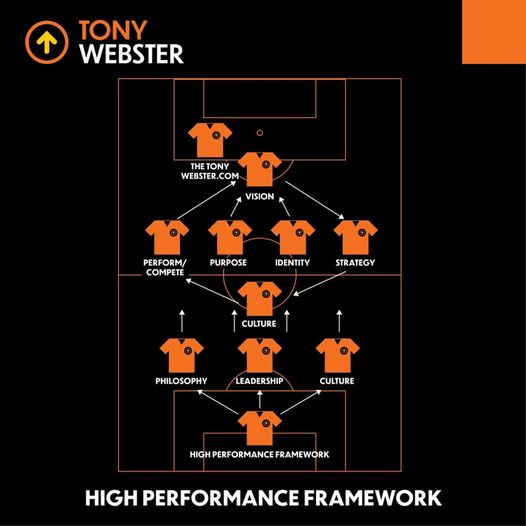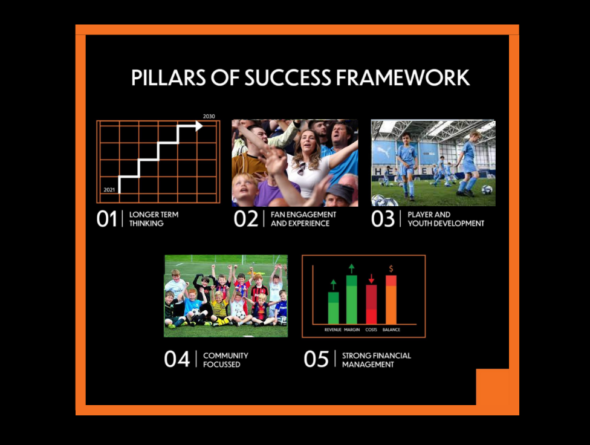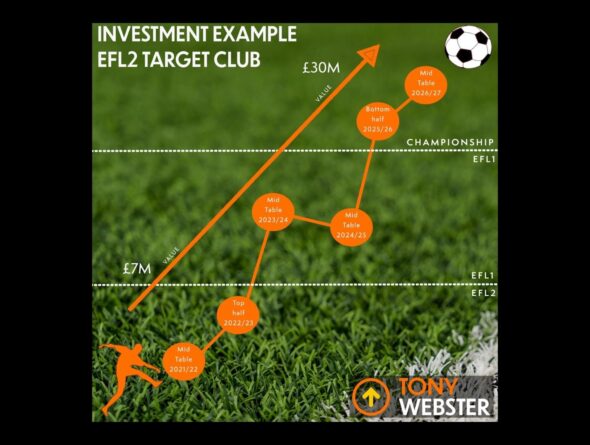High Performance Organisations
Talked about often, but what are they? What do they look like? What is the ideal structure? What are they made up of? What framework is needed to build a high-performance organisation (HPO)?
This short blog is intended as an introduction to my thinking.
It starts with understanding the core PURPOSE and IDENTITY of the organisation, which are the foundations or building blocks. Then there needs to be a very clear VISION and detailed STRATEGIC plan to achieve that vision. It is critical these are communicated, shared and fully understood by all people within the organisation and that everyone believes in, and is committed to them.
Entwined and wrapped around this framework is CULTURE and LEADERSHIP, drive through behaviours and the physical environment of the organisation adding the final elements. Culture is created from 70% the physical environment and the accepted behaviours of all, with the remaining 30% coming from the leadership.
There are many definitions of a HPO and my own is “one which achieves and excels in all areas exceeding predetermined objectives consistently over a prolonged period.”
Many lessons can be learnt from business and sport, all of which are transferable in each direction.
I studied many theories around high-performance when completing my Masters and here are some examples.
Peak Performance Organisation, (PPO), Prof Clive Gilson & Kevin Roberts led a study looking at the world’s best teams-based sports organisations including Bayern Munich, All Blacks, Williams F1, Chicago Bulls plus many more.
They established some core attributes –
- Inspiration
- Re-imagines Purpose
- Competitive advantage
- Achieves and sustains peak performance
- Emotionally connects everyone to the organization
High Performance Organisation theory, a study of businesses by Prof Andre de Waal identified 35 characteristics, 27 of which are people related, across five key factors.
- Quality of Management
- Quality of Workforce
- Continuous Improvement & Renewal
- Open & Action Orientation
- Long-Term Orientation
Organisational Health Index from McKinsey, a more detailed business study which concluded there were nine elements with 37 underlying management principles around behaviours, actions and processes.
Jim Collins’ “Good to Great” organisations theory with Level 5 leaders, who are “a paradoxical blend of personal humility and professional will. Ambitious first and foremost for the company not themselves. More a plow horse than a show horse and looks out the window to attribute success and towards a mirror for failure”.
In comparing these theories, some common elements are evident across all this research from business, industry and sport and concluded some common and transferable facets.
- People
- Leadership
- Vision – unimaginable goals
- Culture – open, focused
- Emotional connection – identity
- Continuous improvement
- Longer term view – purpose
The graphic attached shows the framework, which is the basic structure or foundation to have in place on which to build. At the very core is an understanding and clarity about our Identity. This is who we are; this is what makes us different; this is what makes us special and this is the type of people we are.
When looking at a football club, what is the DNA of the club? What is the history of the club, it’s origins? What do we want the club’s DNA to be? How do we want to play football and what type of players do we want? Look at the city itself, what is the culture in the city, the industry, what does the club actually stand for? If we can understand and articulate this, it becomes part of the unique fabric of the club, it’s DNA.
Purpose follows very closely and it is important that the whole team understand the purpose, believe in the purpose individually and how they fit in to it. Really understanding what it is that the club is trying to do. What is our core purpose? Of course, we’re trying to take the club somewhere into a better position on the pitch, but the purpose should be greater than the results. Barcelona talk about representing Catalonia and not just Barcelona, which combines both Identity and Purpose.
The All Blacks use “whakapa” from the Maouri tradition, “a group of people connected, interlocked together through time and all direction”.
In 2012, South African cricket dominated world cricket in all 3 formats, inspired by “ubuntu”, a Zulu word for humanity, translated into “a person is a person through other people”. The team saw themselves as a mirror of the Nation.
Of course, we have to have goals or objectives to strive for, so what is our Vision? What is that future position that we envision to be success in 1-, 3- or 5-10-years’ time? For example, a League 1 team may strive to become a top Championship side in 3-5 years and be pushing for Premier league in 5-10 years? A definable, challenging and unimaginable goal shared across the whole organisation and everybody in the organisation believing it can be achieved.
Once that is established, a strategy is needed to deliver it. A very detailed step-by-step strategic plan which ensures the club arrives at its desired future destination. The execution of the strategic plan is the most difficult element in any high-performance organisation and these are my four factors to be successful.
Imagination – What – Envision others, by capturing their imagination with ‘what might be’, obtain emotional commitment.
Illustration – How – Strategy, tactics, methods and approach.
Participation – Who – collaboration, consultation and co-authorship.
Integration – making it a reality. Ensuring our way of doing things is embedded. Cultural shift is an operational one.
With the vision and strategy in place, leadership and culture are the differentiating factors. To develop the right culture, you need the right leadership and the right environment in order to perform.
Coming onto culture, it is accepted that 70% is attributed to the environment. You simply cannot have a high-performance organisation and team if you have a very poor environment in which they operate in. It just does not work and its common sense, but the balance of the culture is around and driven by leadership. These two elements are entwined and the leadership of the organisation needs to be a true genuine authentic leadership, with a leader that is there to serve his team or her team. This type of leader must see themselves as working and operating foremost for their team, not the other way around. This is critical in bringing everyone together and collectively executing the strategic plan.
The remaining element of culture is driven by behaviours across the organisation, but led by example by the leader. I know some businesses and organisations have written and published codes of conduct, but actually the best organisations don’t have that. They have things that are acceptable and things that are not acceptable. These things, actions & behaviours are known across the whole organisation. This leadership and acceptable behaviours deliver the remaining 30% of culture.
If all those things come together, an identity and a purpose, a real clear vision and strategic plan, an authentic leadership and level of behaviours fuelling the culture and a high-performance environment, the result will be the foundation for a high-performing organisation
Once you arrive at this point, the challenge is then for it to be self-sustaining, with repeat success after success and only then can it be described as a high-performance organisation, “one which achieves and excels in all areas exceeding predetermined objectives consistently over a prolonged period.”



